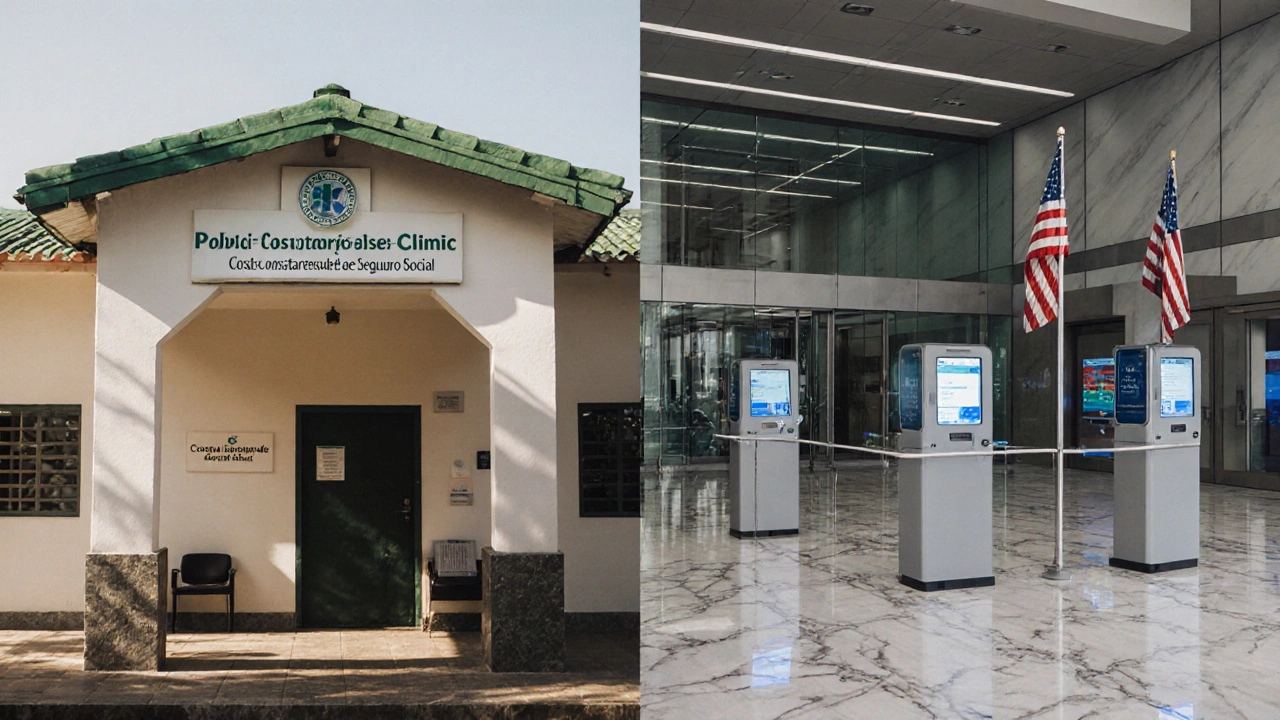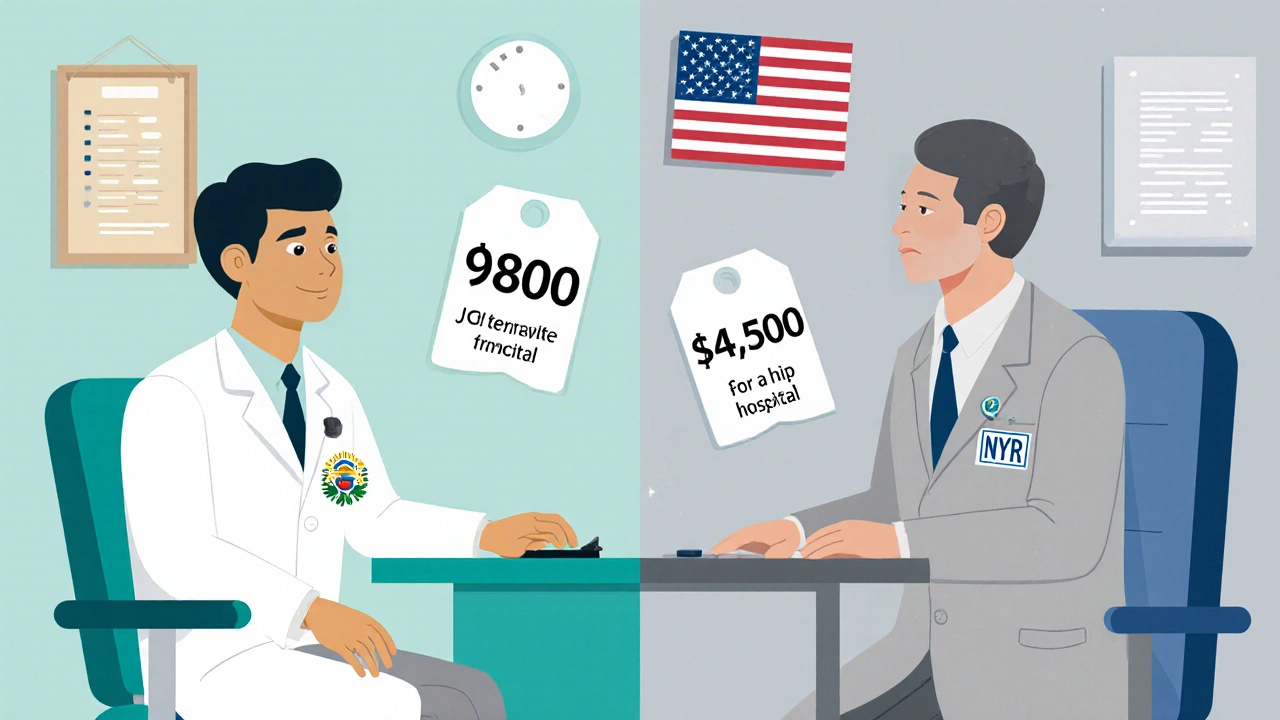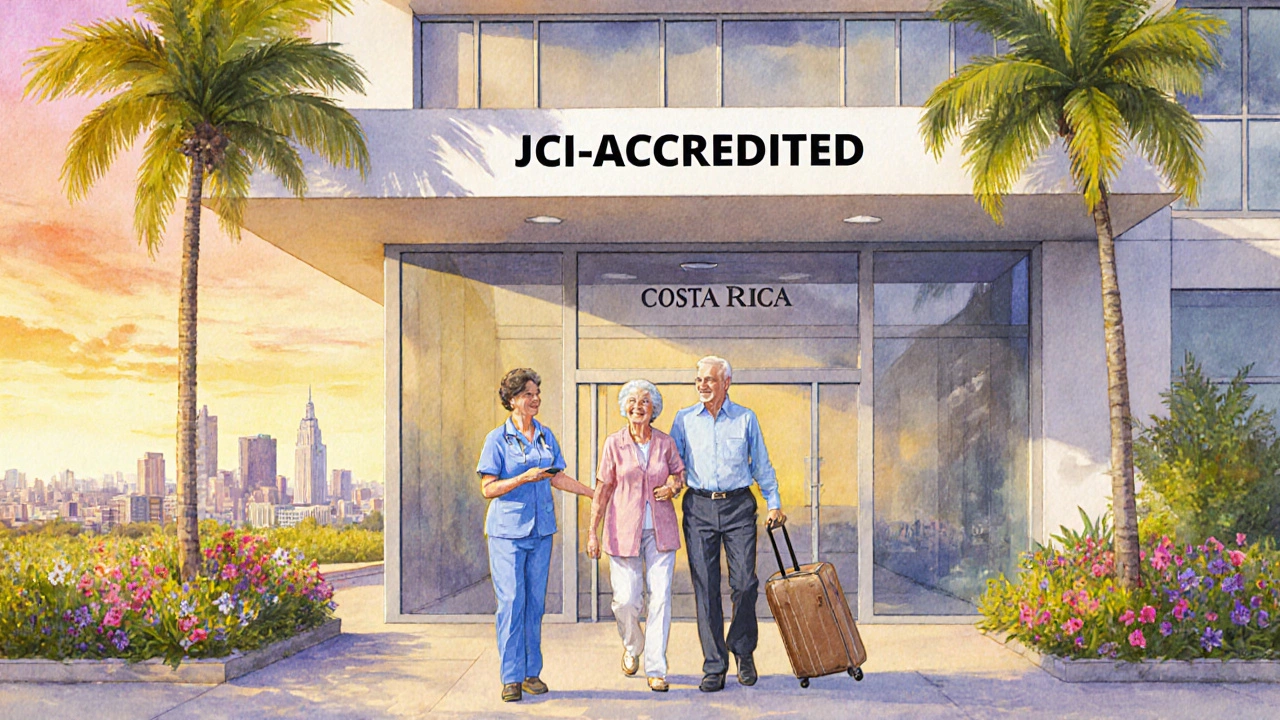Costa Rica vs United States: Which Has Better Healthcare?
 Oct, 19 2025
Oct, 19 2025
Healthcare Cost Calculator
Compare Medical Procedure Costs
Estimated Cost
$0
Estimated Cost
$0
Savings in Costa Rica: 0%
*Costs based on average private hospital rates for medical tourists. Does not include travel, accommodation, or other related expenses.
When you hear the question Costa Rica vs United States: Which Has Better Healthcare? you’re really asking three things: how the two systems are built, how they perform on measurable health outcomes, and how much they cost you as a patient or a medical tourist. Below we break down each piece, compare hard numbers, and give you a checklist to decide which system fits your needs.
Key Takeaways
- Costa Rica offers universal coverage for residents and a growing network of JCI‑accredited private hospitals for tourists.
- The United States spends more per capita but still lags on life expectancy and infant mortality.
- Out‑of‑pocket costs for common procedures are up to 70% lower in Costa Rica.
- Wait times for elective surgeries are shorter in Costa Rica’s private sector, while emergency care is comparable.
- Medical tourists should weigh accreditation, language support, and post‑procedure follow‑up when choosing a destination.
How the Two Systems Are Structured
Costa Rica healthcare system is a hybrid model that blends a publicly funded universal scheme (Caja Costarricense de Seguro Social, or CCSS) with a robust private sector. The public side covers primary care, vaccinations, and chronic disease management for all residents. Private clinics, many of which carry Joint Commission International (JCI) accreditation, serve both wealthier locals and the steady stream of medical tourists.
United States healthcare system operates on a market‑driven model where private insurance dominates, Medicare and Medicaid cover specific populations, and a patchwork of public programs coexist. Employers typically provide coverage, while the uninsured rely on safety‑net hospitals or pay cash for services.
Both countries have a mix of public and private providers, but the balance is very different. Costa Rica’s public side is the backbone for most citizens, while the U.S. leans heavily on private insurers to fund care.
Quality Metrics: What the Numbers Say
Health outcomes are the most objective way to compare quality. Below are the latest WHO and OECD figures (2023‑2024 data).
- Life expectancy at birth: Costa Rica 78.5 years vs United States 78.6 years - virtually identical, but Costa Rica achieves this with far lower spending.
- Infant mortality (deaths per 1,000 live births): 6.5 in Costa Rica, 5.6 in the United States - a small gap, but Costa Rica’s figure is impressive given its GDP per capita.
- Physician density (doctors per 1,000 people): 2.4 in Costa Rica, 2.6 in the United States - comparable, though many Costa Rican physicians work in both public and private settings.
- Hospital accreditation: Over 60% of Costa Rica’s private hospitals hold JCI accreditation, while roughly 30% of U.S. hospitals meet the same standard.
These metrics show that Costa Rica punches above its weight on efficiency and safety, especially in the private sector that serves tourists.

Cost Comparison: What You’ll Actually Pay
Cost is the single biggest driver for medical tourists. Below we look at three common procedures.
- Hip replacement: Costa Rica $9,800 (average private hospital) vs United States $45,000 (average Medicare‑adjusted price).
- Coronary artery bypass graft (CABG): Costa Rica $14,200 vs United States $70,000.
- Dental implant (single unit): Costa Rica $850 vs United States $3,200.
Even after accounting for travel and lodging, total out‑of‑pocket expenses remain 40‑70% lower in Costa Rica. The U.S. system’s high administrative overhead and insurance copays drive the price gap.
Access & Wait Times
In Costa Rica’s public CCSS network, routine appointments can wait 2‑3 weeks, but the private sector offers same‑day or next‑day slots for paying patients. The United States typically has shorter wait times for insured patients at high‑volume hospitals, but uninsured or underinsured individuals may face delays or be turned away.
Emergency care is comparable; both countries have well‑equipped trauma centers in major cities. However, Costa Rica’s smaller geography means most tourists can reach a hospital within an hour’s drive, a logistical advantage in urgent cases.
Patient Experience & Outcomes
Beyond numbers, patient stories matter. A 2022 study of 1,200 American retirees who traveled to Costa Rica for orthopedic surgery reported a 94% satisfaction rate, citing friendly staff, English‑speaking physicians, and clear post‑op instructions. In the United States, patient satisfaction surveys (HCAHPS) show an average score of 71 out of 100 for inpatient care.
Complication rates for joint replacements are statistically similar between the two nations, but Costa Rica’s lower cost and shorter rehab stays make the overall experience more attractive for long‑term retirees and those with limited insurance.

What Medical Tourists Should Consider
- Accreditation: Choose a JCI‑accredited facility to ensure internationally recognized safety standards.
- Language support: Most private hospitals in San José employ bilingual coordinators; verify English fluency before booking.
- Continuity of care: Arrange for a local physician in your home country to handle follow‑up visits.
- Travel insurance: Look for policies that cover medical procedures abroad and post‑procedure complications.
- Legal recourse: Understand the host country’s malpractice laws; Costa Rica’s legal system is transparent but differs from U.S. tort structures.
When you tick off all these boxes, you can confidently decide whether Costa Rica’s lower cost and comparable quality outweigh the familiarity of the U.S. system.
Quick Comparison Table
| Aspect | Costa Rica | United States |
|---|---|---|
| Funding model | Universal public coverage + private pay | Private insurance‑dominant, mixed public programs |
| Average cost of hip replacement | $9,800 | $45,000 |
| Physician density (per 1,000) | 2.4 | 2.6 |
| Life expectancy (years) | 78.5 | 78.6 |
| JCI‑accredited hospitals | 60% of private hospitals | 30% of hospitals |
| Average wait for elective surgery (private) | 1‑2 weeks | 3‑6 weeks |
Frequently Asked Questions
Is medical tourism to Costa Rica safe?
Yes. The majority of private facilities serving tourists are JCI‑accredited, which means they meet rigorous international safety and quality standards. Many doctors also hold board certifications from the U.S. or Europe.
How do I handle post‑procedure follow‑up after returning home?
Arrange a virtual consultation with your Costa Rican surgeon within two weeks of discharge, then schedule an in‑person visit with a local specialist to monitor healing. Most clinics provide detailed post‑op instructions and can coordinate with your home‑country doctor.
Will my U.S. insurance cover procedures done in Costa Rica?
Only a few U.S. insurers reimburse international care, and they usually require pre‑approval. It’s often cheaper to pay out‑of‑pocket and claim a tax deduction if the procedure is medically necessary.
What languages do medical staff speak?
English is widely spoken in private hospitals, especially in tourist hubs like San José and Escazú. Spanish is the official language, so a basic phrasebook can be helpful for interactions with staff outside the clinical setting.
How long does a typical medical tourist stay in Costa Rica?
For most surgical procedures, a 7‑10 day stay covers pre‑op assessments, the operation, and initial recovery. Longer stays are common for complex rehab or when combining treatment with a vacation.